Links to external sources may no longer work as intended. The content may not represent the latest thinking in this area or the Society’s current position on the topic.
Crossroads between transposons and gene regulation

Scientific discussion meeting organised by Dr Miguel Branco and Dr Edward Chuong.
Genome evolution is inextricably linked to the evolution of transposons that reside within. It is increasingly recognised that these selfish mobile elements play major roles in genome regulation. This meeting discussed how transposons have shaped host gene regulation, both through their evolutionary conflict with the host, and through the dispersal of new coding and non-coding sequences with strong regulatory potential.
An accompanying journal issue for this meeting was published in the Philosophical Transactions of the Royal Society B.
Enquiries: contact the Scientific Programmes team
Organisers
Schedule
Chair
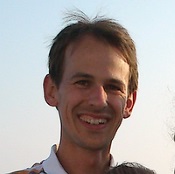
Dr Miguel Branco, Queen Mary University of London, UK

Dr Miguel Branco, Queen Mary University of London, UK
After graduating in Biochemistry (Univ. Lisbon, Portugal), Miguel did a PhD at the MRC Clinical Sciences Centre in London with Prof. Ana Pombo, where he studied the spatial organisation of the genome. He then joined Professor Wolf Reik’s group at the Babraham Institute in Cambridge to investigate mechanisms of epigenetic regulation, and in particular the role of DNA hydroxymethylation in embryonic stem cells. In 2011 he was awarded a Next Generation Fellowship from the Centre for Trophoblast Research and joined the Blizard Institute (QMUL) in 2013 after securing a Sir Henry Dale Fellowship. Miguel’s interests revolve around epigenetic mechanisms that regulate genome function and that are implicated in cell identity, development and disease. His work focuses on retrotransposable elements, aiming to functionally dissect the epigenetic influence that these abundant genomic elements play on the regulation of the host genome.
| 08:05 - 08:40 |
Sleeping with the enemy: Methylation-seeking retrotransposons across eukaryotic lineages
Genomic cytosine methylation is a major mechanism to transcriptionally silence transposable elements across eukaryotes. Therefore, transposable elements are expected to evolve mechanisms to evade methylation to remain active in the host genomes. However, the discovery of several retrotransposons that have hijacked DNA methylation through the acquisition of host genes challenges this expectation. In one case, three distinct retrotransposon classes have acquired cytosine DNA methyltransferases, most spectacularly in the genomes of Symbiodinium dinoflagellates, where hundreds to thousands of copies of these retrotransposons are likely to have influenced the host’s exceptional epigenomic landscape. In another case, a group of arthropod retrotransposons have acquired a functionally active Methyl-CpG Binding Domain. This domain guides the retrotransposon integration into methylated CpG-rich regions, which correspond to repetitive regions of the genome, thus likely decreasing the potentially harmful effects of new insertions. These illustrate the convoluted arms race between transposable elements and their host genomes. Both cases exemplify the delicate balance between expression and silencing that retrotransposons need to achieve in order to co-exist with their host. These serve as the first examples of how transposons can domesticate host genes central to epigenome regulation to their own advantage.

Dr Alex de Mendoza, ARC CoE Plant Energy Biology, The University of Western Australia, Australia

Dr Alex de Mendoza, ARC CoE Plant Energy Biology, The University of Western Australia, AustraliaAlex de Mendoza obtained his PhD at the University of Barcelona under the supervision of Professor Iñaki Ruiz Trillo. During his thesis PhD project investigated the origins of animal multicellularity from a genomic perspective, focusing on the genomic repertoire of the unicellular lineages closely related to animals. After his PhD, he did a short postdoc at the Institute of Evolutionary Biology in Barcelona, following up his work on transcriptional control in a unicellular relatives of animals.Then, he obtained a EMBO long-term fellowship to join the laboratory of Professor Ryan Lister at the University of Western Australia. There de Mendoza shifted his focus to the evolution of DNA methylation in eukaryotes, working in a several non-model systems ranging from unicellular algae to vertebrates. |
|
|---|---|---|
| 09:40 - 10:15 |
Transposable element control during germline development in Drosophila
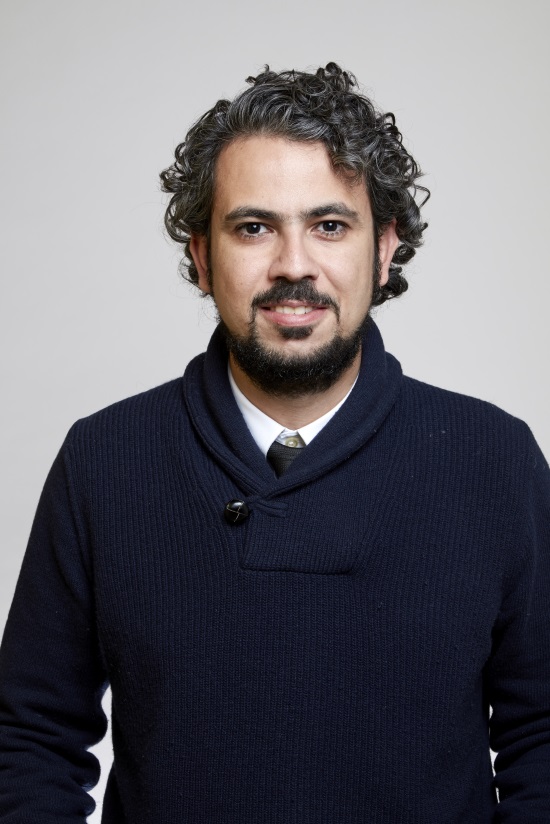
Dr Felipe Karam Teixeira, University of Cambridge, UK

Dr Felipe Karam Teixeira, University of Cambridge, UKDr Felipe Karam Teixeira received his bachelor of science degree in biological sciences and a master of science degree in genetics from the Federal University of Rio de Janeiro, Brazil. He then completed his PhD in Genetics (University of Paris XI) at the Ecole Normale Supérieure (Paris, France), under Dr Vincent Colot's supervision. For his PhD work, Dr Karam Teixeira was awarded the GE & Science Magazine Prize for Young Life Scientists in 2011. After postdoctoral work at the New York University Medical Center/Skirball Institute (USA) with Dr Ruth Lehmann, he joined the Department of Genetics at the University of Cambridge as a Group Leader. Currently, he is a Wellcome Trust/Royal Society Sir Henry Dale Fellow. |
|
| 10:00 - 11:20 |
Impact of transposable elements on human gene regulation
Professor Wysocka’s team is interested in understanding how TEs can serve as a substrate for evolution of novel regulatory elements and functions in the primate lineage. During human pre-implantation development many TEs escape silencing and are transcribed at discreet stages, with most stage-specific regulation occurring at the class of LTR retrotransposons called endogenous retroviruses (ERVs), which are remnants of ancient retroviral infections. One such ERV class, called HERVK, retained coding potential and gives rise to the viral-like particles and proteins that are readily detected in human blastocysts and can influence innate immune response. The team discovered that HERVK LTR elements, called LTR5HS, function as ape-specific enhancers and regulate expression of nearly 300 human embryonic genes. A flip side to TEs serving as a playground for regulatory innovation is that mobile transposons are parasitic elements that pose an ongoing threat to the genome, and thus must be controlled by the host cell. The non-LTR retrotransposon LINE-1 (L1) is the only currently mobile autonomous TE in humans. In collaboration with the Bassik lab at Stanford, the team performed first genome-wide screen for regulators of L1 retrotransposition and identified ~150 human genes that either activate or repress L1 retrotransposition in human cells. Through this screen, the researchers discovered a novel mechanism dedicated to transcriptional silencing of evolutionarily young, full-length L1s immersed within transcriptionally permissive euchromatic environment, and showed that this silencing pathway also has a collateral effect on the host gene expression programs. Professor Wysocka will discuss these findings and talk about her team ongoing work. 
Professor Joanna Wysocka, Stanford University, USA

Professor Joanna Wysocka, Stanford University, USAJoanna Wysocka is a Professor in the Department of Chemical and Systems Biology and the Department of Developmental Biology at Stanford University, a Member of the Stanford Institute for Stem Cell Biology and Regenerative Medicine and an HHMI Investigator. Joanna Wysocka did her PhD work at the Cold Spring Harbor Laboratory with Dr Winship Herr and, after graduating in 2003, postdoctoral training at the Rockefeller University with Dr David Allis. Joanna's research is focused on understanding gene regulatory mechanisms in human development, disease and evolution. Her lab is employing a broad combination of genomic, genetic, biochemical, biophysical, single-cell and embryological approaches in a number of cellular and organismal models to investigate functions of the non-coding parts of the genome, understand regulatory mechanisms underlying stem cell function, cellular plasticity and differentiation, investigate how quantitative changes in gene expression dictate differences in human traits, and study craniofacial development and variation. Dr Wysocka is a recipient of numerous awards, including the Searle Scholar Award, W.M. Keck Foundation Distinguished Young Scholar Award, ISSCR Outstanding Young Investigator Award, and Vilcek Prize for Creative Promise. She was elected to the American Academy of Arts and Sciences in 2018. |
|
| 10:15 - 10:45 | Tea/Coffee | |
| 10:20 - 10:55 |
The impact of transposable element invasions on the evolution of human neuronal gene expression
Approximately half of our genome consists of repetitive DNA sequences, mainly contained in transposable elements (TEs). TEs are retrovirus-derived DNA elements which copy-pasted themselves throughout our genome during vertebrate evolution. TE invasions have been a major driver of genome evolution but it remains elusive to which extent TEs have influenced how genes in the human genome are regulated. In previous work (Jacobs et al, 2014; Nature) Dr Jacobs’s team showed that KRAB zinc finger genes (KRAB-ZNFs) in our genome are in a continuous battle against invasions of TEs, revealing how the human genome is actually in a war against itself. His lab currently investigates how the ‘evolutionary arms race’ between TEs and KRAB-ZNFs has re-shaped gene-regulatory networks involved in human brain development. The team find that TE invasions provided our genome with novel gene-regulatory elements, adding an extra level of complexity to how, where and when neuronal genes in our genome are switched-on or -off. In addition, the researchers find that evolutionary changes in KRAB-ZNFs, provide them not only with the capacity to recognise and repress TEs, but also results in them recognising gene promoters. This suggests that both TEs and KRAB-ZNFs have added new primate-specific layers of gene regulation, repeatedly innovating gene expression networks throughout primate evolution. Consistent with this concept, the team presents one of these KRAB-ZNFs which initially evolved to repress TEs, but now has become a modulator of genes central to brain development. The researchers’ work shows that the impact of TE invasions lasts long after the TE has lost its capacity to replicate, which ironically, is largely due to our own genome’s defense mechanism to protect our genome from uncontrolled spreading of TEs. 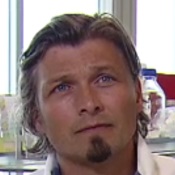
Dr Frank Jacobs, University of Amsterdam, the Netherlands

Dr Frank Jacobs, University of Amsterdam, the NetherlandsFrank Jacobs is associate professor at the University of Amsterdam (the Netherlands) and a recipient of an ERC starting grant and HFSP-career development award. His lab studies how genomic evolution has shaped and rewired gene regulatory networks involved in human brain development. In previous work he and others showed how primate-specific KRAB zinc finger genes in our genome are in a continuous battle against retrotransposon invasions, revealing how our genome is actually in a war against itself (Jacobs et al., 2014; Najafabadi et al., 2015; Imbeault et al., 2017). His lab’s main challenge is to uncover the genome-wide impact of this evolutionary arms race and to reveal how transposable elements and KRAB zinc fingers become heavily integrated in pre-existing gene regulatory networks, adding an extra level of complexity to how, where and when genes in our genome are shut on or off. |
|
| 10:55 - 11:30 |
Transposable elements in early mammalian development: do they burst?
In mammals, the terminally differentiated sperm and oocyte fuse to create a totipotent zygote upon fertilisation. The mechanisms underlying the epigenetic reprogramming towards totipotency that follows fertilisation are not fully understood, and the molecular features of totipotent cells remain scarce. Embryonic cells remain totipotent only for a restricted time window. During this time, embryonic cells are characterised by an atypical chromatin structure and reactivation of specific families of retrotransposons. Recently, it was reported that totipotent-like cells arise in ES cell cultures in vitro. Like in the embryo, these cells are characterised by the expression of MERVL LTR retrotransposons. To address how the expression of these elements is regulated during the transition between totipotent and pluripotent states, Dr Torres-Padilla’s team first examined histone modifications and chromatin structure in early mouse embryos. Remarkably, the researchers have found that specific features of embryonic chromatin are also present in totipotent-like cells in vitro. Based on this analysis, they have begun to decipher key molecular regulators of repetitive elements in the embryo, and how they contribute to shaping the regulatory programme of the newly formed embryo. The team’s results have identified candidate proteins that regulate chromatin function and expression of these elements and show that they can induce totipotency. The researchers are currently examining the role of these molecules in sustaining totipotency in the embryo. Dr Torres-Padilla will present her team’s latest results that reveal a new role for chromatin integrity in promoting epigenetic reprogramming and sustaining molecular features of totipotent cells. 
Dr Maria-Elena Torres-Padilla, Institute of Epigenetics and Stem Cells, Helmholtz Centre Munich, Germany

Dr Maria-Elena Torres-Padilla, Institute of Epigenetics and Stem Cells, Helmholtz Centre Munich, GermanyMaria-Elena did her undergraduate studies at the Faculty of Sciences of the UNAM, Mexico and obtained her PhD at the Institut Pasteur, Paris in 2002. She was a postdoctoral fellow at The Gurdon Institute, University of Cambridge, UK between 2002 and 2006 and then worked as a senior scientist with Laszlo Tora. She started her own lab at the IGBMC in Strasbourg, France in December 2008. She is currently the Director of the Institute of Epigenetics and Stem Cells in Munich, where the lab moved in January 2016. Her research group is focused on studying the epigenetics and cell fate in early mammalian development. In mammals, epigenetic reprogramming, the acquisition and loss of totipotency, and the first cell fate decision all occur within a three-day window after fertilization of the oocyte. Molecularly, these processes are poorly understood, yet this knowledge is an essential prerequisite to uncover principles of stem cells, chromatin biology and thus regenerative medicine. Specifically, the Torres-Padilla Lab investigates the dynamics of de novo heterochromatin formation in mammalian embryos; the chromatin remodelling mechanisms and its impacts on cellular plasticity and establishment of totipotency. |
Chair

Dr Vasavi Sundaram, EMBL-EBI, UK

Dr Vasavi Sundaram, EMBL-EBI, UK
Vasavi Sundaram is a computational biologist who researches how different cells are influenced by active non-coding regions of the genome. Her research integrates experimental data with computational methods to understand how information in the non-coding genome regulates gene expression in normal and tumour cells. She received her undergraduate degree in Industrial Biotechnology from Anna University (India), and then earned her Ph. in Computational & Systems Biology from Washington University in St. Louis (USA). Her doctoral work integrated computational methods and experimental techniques to understand how transposable elements (TEs) impact gene expression regulation. Her research on TEs led her to EMBL-EBI Cambridge, UK, where she is studying the contribution of the non-coding genome (TEs included) on gene expression regulation in cancers. The ultimate goal of her current research aims to quantify the impact of the genome and epigenome on tumour development.
| 12:50 - 13:25 |
Unmasking transposable elements in regulation and disease
A substantial proportion of the genome of many species is derived from transposable elements (TEs). Moreover, through various self-copying mechanisms, TEs continue to proliferate in the genomes of most species. TEs have contributed numerous regulatory, transcript and protein innovations and have also been linked to disease. However, notwithstanding their demonstrated impact, many genomic studies still exclude them because their repetitive nature results in various analytical complexities. Fortunately, a growing array of methods and software tools are being developed to cater for them. Dr Bourque will present a summary of computational resources for TEs and highlight some of the challenges and remaining gaps to perform comprehensive genomic analyses that do not simply 'mask' repeats. As an example, Dr Bourque will also describe a tool called PopSV that was developed to detect copy number variants (CNVs), which are known to affect a large portion of the human genome and have been implicated in many diseases. Although whole-genome sequencing (WGS) can help identify CNVs, most analytical methods suffer from limited sensitivity and specificity, especially in regions of low mappability. Dr Bourque’s team demonstrate that the PopSV calls are stable across different types of repeat-rich regions and validate the accuracy of our predictions using orthogonal approaches. Applying PopSV to 640 human genomes, they find that low-mappability regions are approximately 5 times more likely to harbor germline CNVs, in stark contrast to the nearly uniform distribution observed for somatic CNVs in 95 cancer genomes. 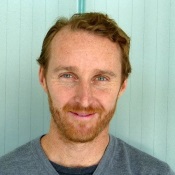
Dr Guillaume Bourque, McGill University, Canada

Dr Guillaume Bourque, McGill University, CanadaGuillaume Bourque is an Associate Professor in the Department of Human Genetics at McGill University, the Director of Bioinformatics at the McGill University & Genome Quebec Innovation Center and he leads the Canadian Center for Computational Genomics (C3G). His research interests are in comparative and functional genomics with a special emphasis on transposable elements and the applications of next-generation sequencing technologies. |
|
|---|---|---|
| 13:25 - 14:00 |
TEtoolkit: Statistically rigorous software for transposon genomics analysis
Transposons form more than half the human genome, and several human diseases have been associated with aberrant activity of transposable elements (TEs) via a variety of mechanisms. Aberrant transposon activity has been shown to induce mutations, alter the regulation of adjacent genes, and produce toxic and/or immunogenic proteins. Despite the importance of TEs in human health and development, reads derived from these regions are frequently ignored in most sequencing data analysis protocols due to the difficulty in properly assigning TE-derived reads to the correct locus of origin. Compromises must often be made between certainty about the exact genomic locations of active TEs and sensitivity to the youngest and most potentially dangerous elements. To address this problem, the Gale-Hammell lab has been systematically creating computational approaches to probabilistically handle reads from repetitive regions in genomics datasets: the TEtoolkit. This has allowed for the identification of new factors contributing to TE silencing as well as new contexts in which TEs are considerably more active than expected. In particular, there is now mounting evidence that TEs contribute to neurodegenerative disease. 
Dr Molly Hammell, Cold Spring Harbor Laboratory, USA

Dr Molly Hammell, Cold Spring Harbor Laboratory, USAMolly Gale Hammell is an associate professor of quantitative biology at Cold Spring Harbor Laboratory. The Hammell lab focuses on the contribution of retrotransposons to neurodegenerative disease, with a particular focus on the motor neuron disease ALS. As part of this work, the Hammell laboratory has developed multiple software packages for including transposable elements derived reads in sequencing data analysis. Dr Gale Hammell is a Milton Cassel Fellow of the Rita Allen Foundation, and has received the Ben Barres Early Career Acceleration Award. |
|
| 14:30 - 15:05 |
A functional ‘gene-like’ annotation of transposable elements using full-length cDNA sequencing
Transposable elements (TEs) are more mobile genetic units that have been found to play key regulatory roles in gene expression and impact eukaryotic evolution. Sequencing a new genome of any organism has always been accompanied with annotation of both genes and repeat elements like TEs. But, due to the mobile nature of TEs, there have been constant efforts in discovery of non-reference TEs by resequencing genomes especially with the advent of long read sequencing. However, there is a case to be made to move beyond TE discovery towards transcriptional annotation. It is common for genes to have annotated transcriptional start sites, stop sites and exon-intron boundaries whereas TEs are annotated as blocks of DNA without any transcriptional information. This talk will focus on the loss of information and bioinformatic artefacts that arise because of lack of TE transcriptional annotation. In his research Dr Panda has created a transcript-based functional annotation of Arabidopsis TEs using Nanopore full-length cDNA sequencing in a number of TE activated strains. He will show that characterising TE transcripts improves our investigation of TE RNAs by reducing the complex multi-mapping of short reads. This annotation also enables other genomic studies, for example, understanding how TE integration affects regional mRNA production. 
Dr Kaushik Panda, Donald Danforth Plant Science Center, USA

Dr Kaushik Panda, Donald Danforth Plant Science Center, USAKaushik Panda obtained an integrated BS – MS degree from the Indian Institute of Science Education and Research, in Kolkata, India. In 2011, Kaushik moved to Columbus, Ohio, USA to pursue a PhD in Molecular Genetics at The Ohio State University. There he worked with Dr R Keith Slotkin studying the silencing mechanisms that regulate transposable elements (TEs) in the model plant Arabidopsis thaliana. His research centered on the bioinformatic investigation of 26(?) methylomes of plants with different levels of TE activation, and his work showed that full-length potentially autonomous TEs are regulated by different mechanisms than the non-autonomous TE fragments. He is continuing his research at the Donald Danforth Plant Science Center where he strives to generate tools to improve methods to better investigate all TEs. |
|
| 15:00 - 15:30 | Tea | |
| 15:05 - 15:40 |
TE driven genome dynamics in a plant lineage over 15 My of evolution
Rice is the staple food crop for more than half of the world’s population. Many factors are now jeopardizing a sustainable production of this cereal, among which, population size increase, environmental changes and reduction of arable land caused by cities expansion. As a consequence, rice has been the focus of intense research over the last decades, which lead to the development of large genomic resources such as several high quality genome assemblies for cultivated rice and several of its wild relatives, genome sequences for 3,000 rice varieties and transcriptomic data for many developmental stages and various physiological stresses. Therefore, the genus Oryza (to which cultivated rice belongs) is now one of the best models to study genome evolution using full scale genomic analyses. We took advantage of these resources to address the question of the impact of transposable elements (TEs) on the structure and evolution of this plant genome. Here, we show that TEs contribute to genomic turn-over at a rate which is much higher than in animal kingdom. We then looked at the transpositional landscape of cultivated Asian rice, taking advantage of the availability of the 3,000 genomes dataset. This resource provides the opportunity to study the impact of TEs at the species level. We show that retrotransposons (the major TE type in plants) are very active in this crop and contribute to genome diversification in agro. Our results suggest that one could tentatively search for TE insertion polymorphisms that may have been adaptive in the recent history of rice cultivation. 
Professor Olivier Panaud, University of Perpignan, France

Professor Olivier Panaud, University of Perpignan, FranceOlivier Panaud is a full Professor at the University of Perpignan and leader of the Genome analysis and evolution team in the Plant Genome and Development laboratory (UPVD/CNRS). He is senior member of Institut Universitaire de France (promotion 2015). His research area is evolutionary genomics with a particular focus on the impact of transposable elements on the structure, the function and the evolution of plant genomes. He obtained his PhD in 2012 at the University of Orsay (Paris XI) for the research he conducted at the International Rice Research Institute in the Philippines. He then completed two post-doctoral projects, one at the Plant breeding and Biometry Department in Cornell University (NY, USA) from 1992 to 1995 and the second one at the University of Orsay at the Evolution and Systematics Department from 1995 to 1997. He then became Assistant Professor at the University Pierre et Marie Curie (Paris VI). He has been full Professor at the University of Perpignan since 2003. Olivier PANAUD authored or co-authored 72 publications (H-index of 34). From 2008 to 2012 he was Vice-President for Research of University of Perpignan and is currently Vice-President for Research of COMUE Languedoc Roussillon (2017-2021). |
|
| 15:40 - 17:15 | Poster session |
Chair

Dr Edward B Chuong, University of Colorado Boulder, USA

Dr Edward B Chuong, University of Colorado Boulder, USA
Edward Chuong is an assistant professor of molecular, cellular, and developmental biology at the BioFrontiers Institute at the University of Colorado, Boulder. His lab investigates the evolution of vertebrate immune regulatory networks, focusing on the contribution by transposable elements. Dr Chuong received his BS in Bioinformatics from the University of California, San Diego and his PhD in Genetics from Stanford University with Dr Julie Baker. He did his postdoctoral training as an HHMI/Jane Coffin Childs Fellow at the University of Utah with Dr Nels Elde and Dr Cedric Feschotte.
| 08:00 - 08:35 |
Understanding the potential of TEs to regulate gene expression in mammals
Transposable Elements (TEs) have now been known to participate in gene expression regulation for several decades. This is an advancement for ‘jumping’ genes which were once thought to be ‘junk’ DNA. However, the extent of TEs’ influence on gene regulation is still being discovered. Understanding TEs and their effect on the breadth of gene expression states and cellular behaviour is central to unmasking the function of TEs. Britten and Davidson postulated the ‘gene-battery’ model that guides our current understanding of TEs in gene expression regulation. TEs represent almost half of human DNA and are capable of regulatory functions from harbouring binding sites for various transcription factors and exhibiting tissue-specific epigenetic activity. Due to the redundancy provided by TEs across the genome, the cellular machinery gains widespread access and control on gene expression across the genome. There are several cases over evolution where TEs underwent exaptation and co-option in gene regulatory landscapes. Together with the ‘gene-battery’ model these cases demonstrate the impact of TEs on gene regulation and occasionally dysregulation of in cells. 
Dr Vasavi Sundaram, EMBL-EBI, UK

Dr Vasavi Sundaram, EMBL-EBI, UKVasavi Sundaram is a computational biologist who researches how different cells are influenced by active non-coding regions of the genome. Her research integrates experimental data with computational methods to understand how information in the non-coding genome regulates gene expression in normal and tumour cells. She received her undergraduate degree in Industrial Biotechnology from Anna University (India), and then earned her Ph. in Computational & Systems Biology from Washington University in St. Louis (USA). Her doctoral work integrated computational methods and experimental techniques to understand how transposable elements (TEs) impact gene expression regulation. Her research on TEs led her to EMBL-EBI Cambridge, UK, where she is studying the contribution of the non-coding genome (TEs included) on gene expression regulation in cancers. The ultimate goal of her current research aims to quantify the impact of the genome and epigenome on tumour development. |
|
|---|---|---|
| 08:35 - 09:10 |
Transposon repression or how to hit a moving target
|
|
| 09:40 - 10:15 |
Retroelements, their polydactyl controllers and the specificity of human biology
KRAB-containing zinc finger proteins (KZFPs) repress the transcriptional activity of transposable elements-embedded regulatory sequences (TEeRS) shortly after embryonic genome activation. Many TEeRS subsequently serve as developmental or tissue-specific modulators, but how KZFPs modulate this process is unknown. We identified two primate-specific KZFP paralogs responsible for repressing partly overlapping sets of evolutionarily recent TEs in human ESCs. These KZFPs are expressed in the developing and adult human brain and control the ability of their targets TEeRS to modulate gene expression in iPSC-derived neurons and brain organoids, notably regulating neurotransmitter profile and preventing the induction of neurotoxic retroviral ENV and of an interferon-like response. These data demonstrate that, rather than just silencing TEs in early embryogenesis, KZFPs keep controlling their transcriptional impact later in development and in adult tissues, and that the evolutionary selection of KZFP genes, rather than reflecting a simple arms race, partakes in the domestication of TEeRS towards the genesis of human-specific transcription networks. Our results also imply that sequence alterations in these KZFP genes or their target TE-derived loci could impact on brain development, function and disease susceptibility. 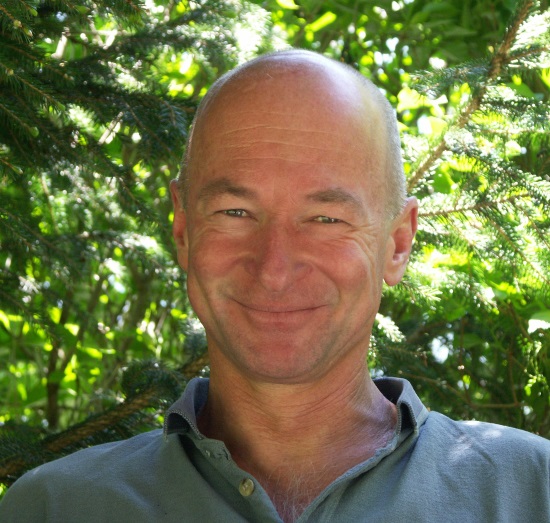
Professor Didier Trono, École Polytechnique Fédérale de Lausanne, Switzerland

Professor Didier Trono, École Polytechnique Fédérale de Lausanne, SwitzerlandDidier Trono MD completed a clinical training in pathology, internal medicine and infectious diseases in Geneva and at Massachusetts General Hospital and post-doctoral studies at MIT’s Whitehead Institute. In 1990, he moved to the Salk Institute to launch a center for AIDS research. From 1997 to 2004, he was at the University of Geneva before joining the EPFL as dean of its newly launched School of Life Sciences, a position he held for eight years. He now steers the Health 2030 Initiative, which aims at fostering the advent of personalized health in Switzerland. Didier Trono’s research has long gravitated around interactions between viruses and their hosts. This led him first to the development of tools for gene therapy, then to epigenetics, where his work on mobile genetic elements and their controllers is providing new insights into human biology and promising leads for precision medicine. |
|
| 10:10 - 10:40 | Coffee | |
| 10:15 - 10:50 |
Transposable elements and the regulation of embryonic cell identity
Much research has focused on the contribution made by single-copy genes and their protein products to the process of early embryogenesis. Conversely, transposable elements (TEs) have been greatly understudied, despite comprising nearly half of mammalian genomes. LINE1 retrotransposons are the most abundant TE class and thought to be largely deleterious for cells due to their ability to ‘copy and paste’ themselves into new sites. However paradoxically, LINE1 is expressed during early mouse embryo development, suggesting a potential function in normal developmental processes. Here Dr Percharde reports that LINE1 plays essential roles in mouse embryonic stem cells (ESCs) and in pre-implantation embryos. In ESCs, LINE1 RNA acts as a nuclear RNA scaffold that recruits Nucleolin and Kap1/Trim28 to repress Dux, a master activator of a transcriptional program specific to the totipotent 2-cell embryo. LINE1 depletion causes inappropriate activation of Dux, along with genes and transcripts driven by the 2-cell specific LTR retrotransposon, MERVL. Intriguingly, this same complex also participates in gene activation, whereby LINE1-dependent association at rDNA repeats promotes rRNA synthesis, hypertranscription and ESC self-renewal. In embryos, LINE1 is required for correct Dux silencing, rRNA synthesis, and exit from the 2-cell stage. These results reveal an essential partnership between LINE1 RNA and chromatin factors in the regulation of transcription, developmental potential and ESC self-renewal. 
Dr Michelle Percharde, Imperial College and MRC London Institute of Medical Sciences, UK

Dr Michelle Percharde, Imperial College and MRC London Institute of Medical Sciences, UKDr Michelle Percharde is an epigenetics and stem cell biologist, with a particular interest in understanding the role of transposable elements during development. She carried out her undergraduate degree in Biochemistry at the University of Cambridge and PhD in reprogramming and nuclear receptors at Imperial College, London. In 2013, she moved to UCSF in San Francisco and was awarded a CIRM postdoctoral fellowship to carry out her postdoctoral training with Prof. Miguel Ramalho-Santos. She moved to Imperial College and the MRC London Institute of Medical Sciences (LMS) as an independent fellow in 2018. |
|
| 10:50 - 11:25 |
3'UTR SINE-Directed mRNA Metabolism
Primate-specific Alu SINEs as well as rodent-specific B and ID (B/ID) SINEs can promote mRNA export from the nucleus to the cytoplasm, translation in the cytoplasm and/or Staufen-mediated mRNA decay (SMD) when present in mRNA 3'UTRs. The transposable nature of SINEs, their presence in long noncoding RNAs, their interactions with Staufen (STAU), and their rapid divergence in different evolutionary lineages suggest they could have generated substantial modification of post-transcriptional gene-control networks during mammalian evolution. Some of the variation in SMD regulation produced by SINE insertion might have been similarly adaptive in separate mammalian lineages, leading to parallel evolution of the STAU network by independent exaptation of SINEs. To explore this, Professor Maquat’s team searched for orthologous gene pairs, each carrying a species-specific 3'UTR SINE and each regulated by SMD, by measuring changes in mRNA abundance after individual depletion of two SMD factors, STAU1 and UPF1, in both human and mouse myoblasts. They identified and confirmed orthologous gene pairs with 3'UTR SINEs that have been independently exapted in mouse and humans for SMD control of myoblast metabolism. Their work reveals a novel mechanism for the convergent evolution of post-transcriptional gene regulatory networks in mammals by species-specific SINE transposition and SMD. 
Professor Lynne Maquat, University of Rochester, USA

Professor Lynne Maquat, University of Rochester, USALynne Elizabeth Maquat is the J Lowell Orbison Endowed Chair and Professor of Biochemistry & Biophysics in the School of Medicine and Dentistry, Director of the Center for RNA Biology, and Chair of Graduate Women in Science at the University of Rochester, Rochester, NY, USA. After obtaining her PhD in Biochemistry from the University of Wisconsin-Madison and undertaking post-doctoral work at the McArdle Laboratory for Cancer Research, she joined Roswell Park Cancer Institute before moving to the University of Rochester. In 1981, Professor Maquat discovered nonsense-mediated mRNA decay (NMD) in mammalian cells and subsequently, while elucidating the mechanism of NMD, the splicing-dependent “mark”, i.e. the exon-junction complex (EJC), and how the EJC marks mRNAs for a quality-control “pioneer” round of protein synthesis. She also discovered Staufen-mediated mRNA decay, which mechanistically competes with NMD and, by so doing, new roles for short interspersed elements and long non-coding RNAs. Additional current interests include microRNA decay and functional links between transcription factors and RNA-binding proteins. She is an elected Fellow of the American Association for the Advancement of Science (2006), and an elected Member of the American Academy of Arts & Sciences (2006), the National Academy of Sciences (2011), and the National Academy of Medicine (2017). Lynne was a Batsheva de Rothschild Fellow of the Israel Academy of Sciences & Humanities (2012-2013) and has received the William C. Rose Award from the American Society for Biochemistry & Molecular Biology (2014), a Canada Gairdner International Award (2015), the international RNA Society Lifetime Achievement Award in Service (2010) and in Science (2017), the Vanderbilt Prize in Biomedical Science (2017), the Federation of American Societies for Experimental Biology (FASEB) Excellence in Science Award (2018), and the Wiley Prize in Biomedical Sciences (2018). |
Chair

Dr Guillaume Bourque, McGill University, Canada

Dr Guillaume Bourque, McGill University, Canada
Guillaume Bourque is an Associate Professor in the Department of Human Genetics at McGill University, the Director of Bioinformatics at the McGill University & Genome Quebec Innovation Center and he leads the Canadian Center for Computational Genomics (C3G). His research interests are in comparative and functional genomics with a special emphasis on transposable elements and the applications of next-generation sequencing technologies.
| 12:35 - 13:10 |
Insertion variants at disease risk loci
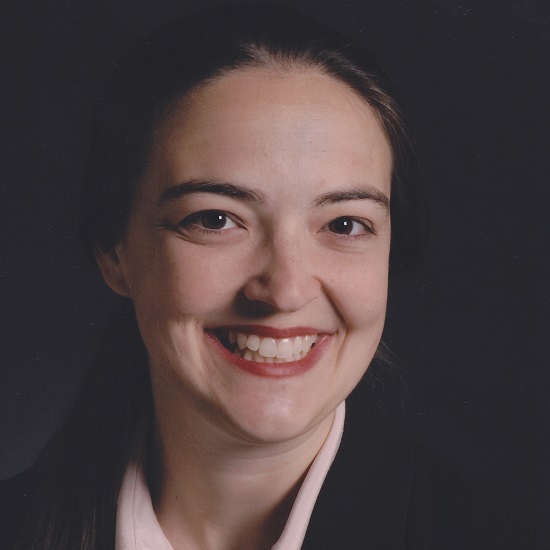
Dr Kathleen Burns, Johns Hopkins University School of Medicine, USA

Dr Kathleen Burns, Johns Hopkins University School of Medicine, USAKathleen Burns, MD, PhD, is a Professor at Johns Hopkins School of Medicine. Her research laboratory studies roles mobile DNAs play in human disease. Her group was among the first to develop a targeted method for amplifying mobile DNA insertion sites in the human genome, showing that these are a significant source of structural variation in human populations. The lab has ongoing projects focused on discerning the functional consequences of inherited and somatically-acquired mobile element insertions, and exciting evidence that germline Alu insertions may predispose to disease phenotypes. Her lab also studies expression and activity of Long INterspersed Element-1 (LINE-1) in cancer. |
|
|---|---|---|
| 13:10 - 13:45 |
Somatic LINE retrotransposition on zebrafish
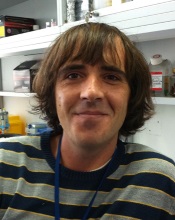
Dr Jose Luis García-Pérez, MRC Human Genetics Unit, UK

Dr Jose Luis García-Pérez, MRC Human Genetics Unit, UKDr Jose L Garcia-Perez’s laboratory research is focused on Transposable Elements (TEs), how they move and how these pieces of mobile DNA can impact eukaryotic genomes, and how the host regulates them. He obtained his PhD at University of Granada in Spain, trained as a postdoctoral fellow in the US (laboratory of John V Moran), and since 2008 he has led his own research team. He has secured funding from regional, national and international calls, including an ERC-Consolidator. In January 2012, he was appointed by the Howard Hughes Medical Institute as an International Early Career Scientist, and in 2016 he was awarded a Chancellor’s Fellowship from the University of Edinburgh and joined the MRC Human Genetics Unit at the Institute of Genetics and Molecular Medicine (IGMM) in Edinburgh, Scotland. His laboratory is interested in autonomous human active TEs, denominated LINE-1 or L1 for Long INterspersed element class 1, and his group has developed physiological models to understand TE accumulation in humans, their impact, and their epigenetic regulation. More recently, and aiming to understand the impact of LINE-1 mobilization in the brain, his group has developed new in vivo models of LINE retrotransposition, using zebrafish. |
|
| 14:15 - 14:50 |
The role of natural transposable element insertions in stress response
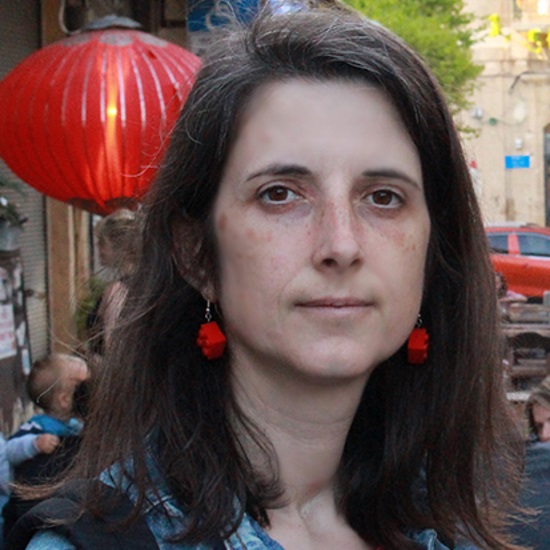
Dr Josefa González, Institute of Evolutionary Biology, Spain

Dr Josefa González, Institute of Evolutionary Biology, SpainDr Josefa González is a group leader at the Institute of Evolutionary Biology (CSIC-UPF). Dr González received her PhD from the Universitat Autònoma de Barcelona. She then moved to the Department of Biology at Stanford University as a Fulbright Postdoctoral Fellow. Dr González research combines genomic and functional approaches to identify the genetic basis, molecular mechanisms, and functional consequences of adaptation. She is co-leading the European Drosophila Population Genomics Consortium (droseu.net), and she is an ESEB council member (eseb.org). Dr González is also leading science outreach projects to raise science awareness. |
|
| 14:45 - 15:15 | Tea | |
| 14:50 - 15:25 |
Transposable elements and alternative splicing in cancer
Transposable element (TE) derived sequences comprise almost half of the human genome, and their presence has been documented to alter transcripts in a number of different ways, including the generation of alternatively spliced isoforms. Alternative splicing has in turn been associated with tumorigenesis for a number of different cancers. The objective of this study was to broadly characterise the role of human TEs in generating alternatively spliced isoforms in cancer. To do so, Dr King Jordan’s team screened for the presence of TE-derived sequences co-located with alternative splice sites that are differentially utilised in paired normal versus cancer tissues. They analysed a comprehensive set of alternative splice variants from 8,705 matched normal-tumor tissue pairs characterised via RNA-seq as part of The Cancer Genome Atlas (TCGA). Their algorithm uncovered close to 500,000 TE-generated alternative splice events distributed among Catalogue Of Somatic Mutations In Cancer (COSMIC) census genes that have been causally implicated in cancer, and alternative splice sites were significantly enriched within TEs for cancer-implicated genes. SINEs and LINEs were found to contribute the majority of TE-generated alternative splice sites in cancer genes, and TE sequences were equally likely to be involved in the elimination of canonical splice sites or the generation of novel splice sites in cancer tissues. Differential expression analysis was used to detect TE-derived splicing events that are over-expressed in cancer tissues. A number of cancer-associated genes – ATM, MUC16, and MYC – were shown to have overexpressed TE-generated isoforms across a range of cancer types. 
Dr King Jordan, Georgia Institute of Technology, USA

Dr King Jordan, Georgia Institute of Technology, USADr King Jordan is an Associate Professor in the School of Biological Sciences and Director of the Bioinformatics Graduate Program at the Georgia Institute of Technology. Dr Jordan has an educational background in the life sciences along with more than 20 years of research experience in bioinformatics. He received a BS in Biology from the University of Colorado (1992) and a PhD in Genetics from the University of Georgia (1998). Before coming to Georgia Tech in 2006, Dr Jordan trained at the US National Institutes of Health’s (NIH) National Center for Biotechnology Information (NCBI). Members of Dr Jordan’s laboratory at Georgia Tech (jordan.biology.gatech.edu) conduct bioinformatics research with an emphasis on the analysis of ‘big data’ for understanding the molecular genetic determinants of human health. His group’s research efforts involve both the development and application of computational tools specifically tailored for genomic sequence analysis as well as various ‘omics’ functional analyses. |
|
| 15:25 - 16:00 |
Birth of circadian enhancers from transposable elements
Circadian regulators (CRs) are transcription factors that activate or repress circadian gene expression through an oscillatory feed-forward mechanism. The researchers found that ~14% of CR binding sites in the mouse liver are derived from transposable elements and other repeats. While these repeat-associated binding sites (RABS) display comparable oscillatory CR binding to non-RABS, a smaller fraction is characterized by hallmarks of active enhancers. RABS are enriched near genes associated with murine-specific phenotypes. RSINE1, an abundant rodent-specific SINE, contributed a disproportionate amount of RABS. Sequence analyses and reporter assays show that the circadian regulatory propensity of RSINE1 can be explained by the presence of imperfect CR and nuclear receptor binding motifs in the RSINE1 consensus sequence, which have matured after insertion into canonical motifs through recurrent point mutations. Furthermore, CR-bound RSINE1 elements are enriched near evolutionarily older circadian regulatory elements, suggesting that their insertion close to these ancestral elements favored their maturation into redundant enhancers. Together these data point to a model whereby the birth of enhancers from transposons is conditioned not only by the ancestral sequence of the transposon and its post-insertional modification by mutation, but also by the cis-regulatory landscape surrounding the insertion site. The model illuminates how transposition fuels the emergence and turnover of enhancers during mammalian evolution. 
Professor Cédric Feschotte, Cornell University, USA

Professor Cédric Feschotte, Cornell University, USACédric Feschotte received his PhD in 2001 from the University Pierre & Marie Curie in Paris during which he characterized mosquito transposable elements with Professor Claude Mouchès. He then joined the group of Dr Susan Wessler at the University of Georgia in Athens, GA as a postdoctoral fellow where he contributed to elucidate the origin and amplification mechanism of 'MITE' transposons in plant genomes. In 2004, he became an Assistant Professor in the Department of Biology at the University of Texas, Arlington where he was promoted to Associate Professor in 2009. In 2012, he joined the Department of Human Genetics at the University of Utah School of Medicine in Salt Lake City. Since July 2017 he has been a Professor in the Department of Molecular Biology and Genetics at Cornell University in Ithaca, NY. His laboratory uses an integrative approach to study the evolution and biological impact of various forms of mobile DNA, with an emphasis on the genomes of vertebrates. |
